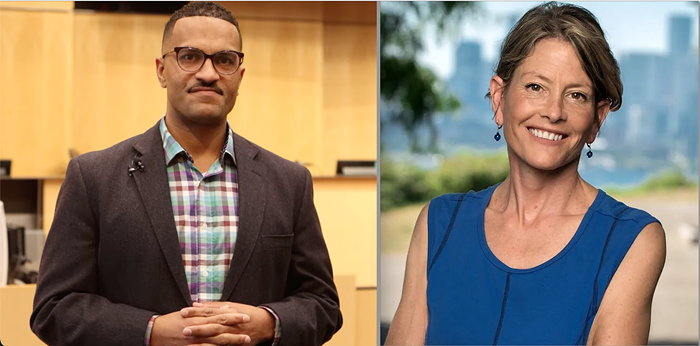"Research shows that one of the best investments we can make in a child's life is high-quality early education," President Barack Obama told the nation during his
January 27 State of the Union address. It was a repeat message from his previous year's address, when he asked Congress to make high-quality preschool available to every 4-year-old. Congress didn't.
"In the meantime, 30 states have raised pre-K funding on their own," Obama continued. "They know we can't wait."
And neither can Seattle.
While our federal and state governments have done a great job in recent years both in making the case for universal high-quality preschool and in defining what a high-quality program might look like, they've done jack shit to put their money where their mouth is. So under the leadership of Seattle City Council president Tim Burgess, Seattle is preparing to go it alone. And if you want an idea of what Burgess has in mind, you might want to look at Boston, because that's what the council is doing.
Boston implemented free universal preschool in 2005, and after some fits and starts, the city-funded program now serves 2,300 4-year-olds in Boston's public schools, plus another 300 students in 13 community-based classrooms. Burgess is leading a delegation of council members to visit Boston later this month for a firsthand look at its program. And at a February 3 hearing, the council as a whole got a briefing from experts who have studied Boston's preschool experiment and found it to be a huge success.
"These are some of the strongest impacts to date from an at-scale program," Professor Christina Weiland of the University of Michigan told the council about Boston's experience. While studies have long reported remarkable results from small preschool programs, Head Start and large statewide programs have proven less successful. But citywide programs in Boston and Tulsa are producing between a half-year and a year of additional learning beyond students in other lower-quality programs.
Boston's example is especially useful to similarly sized Seattle, says Weiland, because we are attempting to build a program on a similar scale. It's a great opportunity, she says, for "city to city learning."
Weiland explains that the key to Boston's success is twofold. First, Boston implemented "structural quality": quantitative standards like class size, adult-child ratio, and teacher qualifications. For example, both state and federal guidelines call for the lead preschool teacher in every classroom to have a minimum of a BA in early learning.
But structural quality isn't enough. A couple years into Boston's program, an independent evaluation found that it was failing to produce results. So the city decided to slow its rollout, retool, and focus on implementing what Weiland calls "process quality," which is the quality of teacher-child interaction, including emotional support and classroom engagement. Structural quality, says Weiland, provides a framework on which to build process quality, but does not guarantee that it will occur.
To achieve process quality, Boston implemented proven early childhood curricula along with regular monitoring of students' progress, to inform (but not evaluate) the teacher. But equally important, says Weiland, is Boston's intensive, in-classroom, twice-monthly (or more) coaching of teachers by former teachers. "This is how we train doctors," says Weiland. "This is how adults learn."
But while Burgess appears to be guiding the council toward Boston's classroom model, that's where many of the similarities end. Boston initially implemented its preschool program entirely through its public schools—due to lack of capacity, Seattle will pursue a mixed delivery model that mostly funds classrooms in private and nonprofit settings, creating a controversy over teacher pay that would not be an issue within our unionized public schools.
And Seattle's universal preschool program will also ultimately be larger, as the goal is to eventually serve both 3- and 4-year-olds. A "gap analysis" released by the council on January 30 found that as many as 37 percent of Seattle's 12,280 3- and 4-year-olds are not currently enrolled in preschool, with about 2,000 of the city's poorest children already served through Head Start and other government-funded programs. At an estimated cost of about $12,000 per student, the price tag for free universal preschool may scare off voters, so council members are currently looking at a sliding scale tuition fee starting at 200 percent of the federal poverty level (about $47,000 for a family of four).
"While it's expensive, the return on investment is huge," Burgess explains—between three and seven dollars back in cost savings and higher tax revenues on every dollar spent, according to the latest studies. And that doesn't even count the improved life outcomes for students: higher graduation rates and incomes, lower incarceration and teen pregnancy rates, better health, and more. "The list goes on and on and on," says Burgess.
It's an investment the city would be stupid not to make. ![]()


















